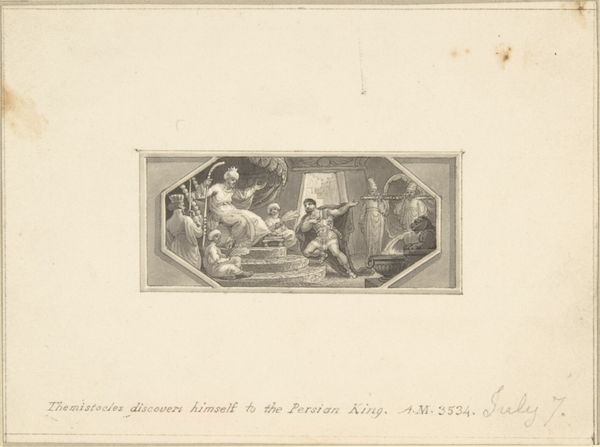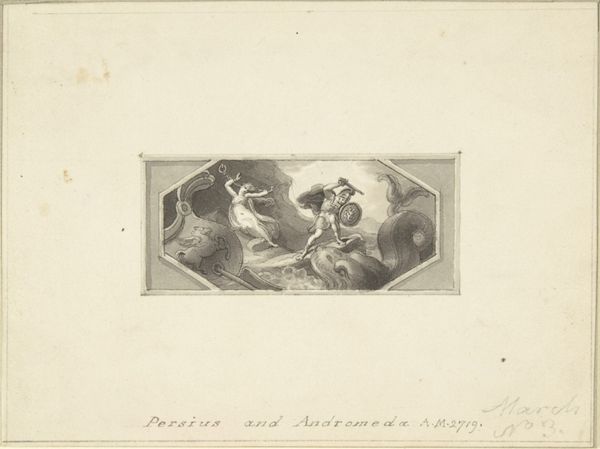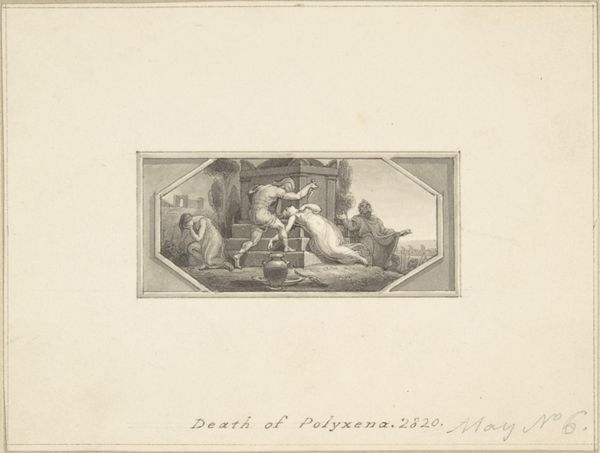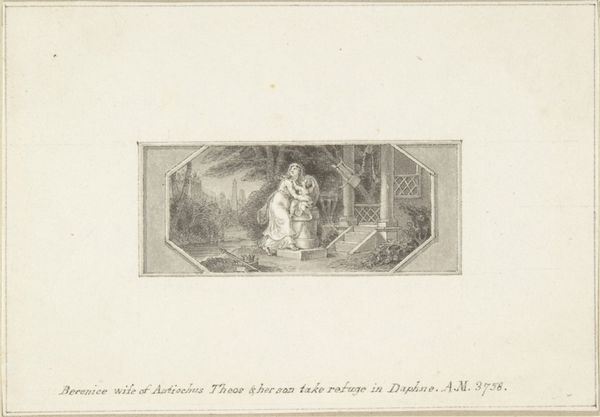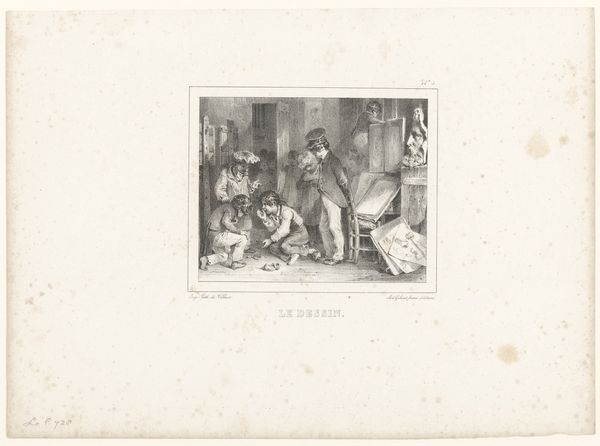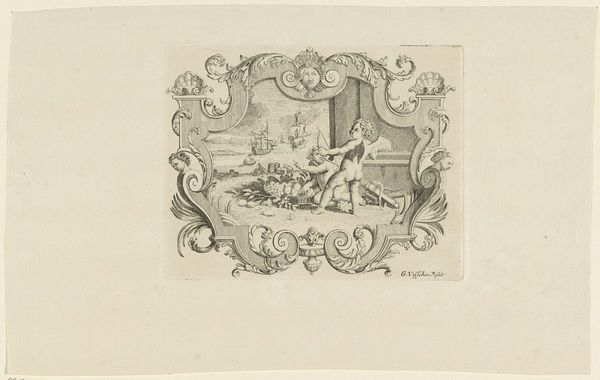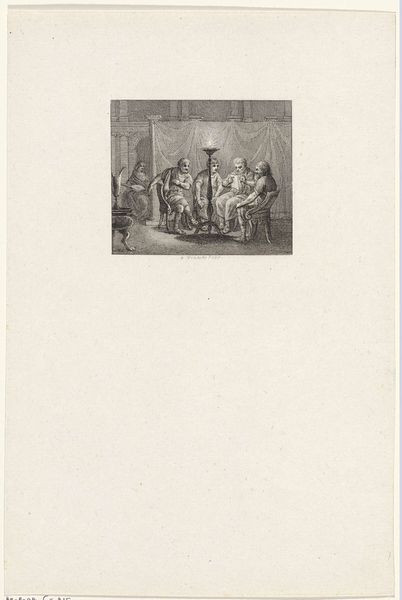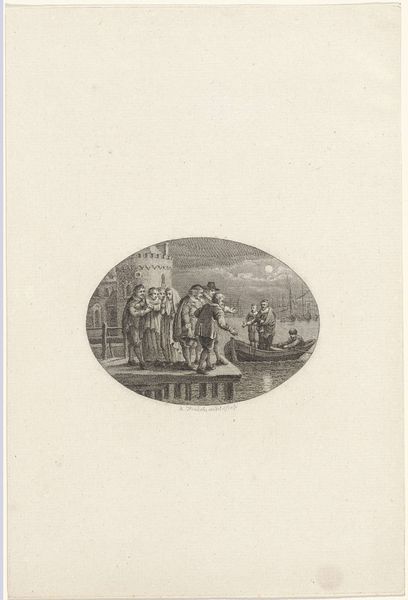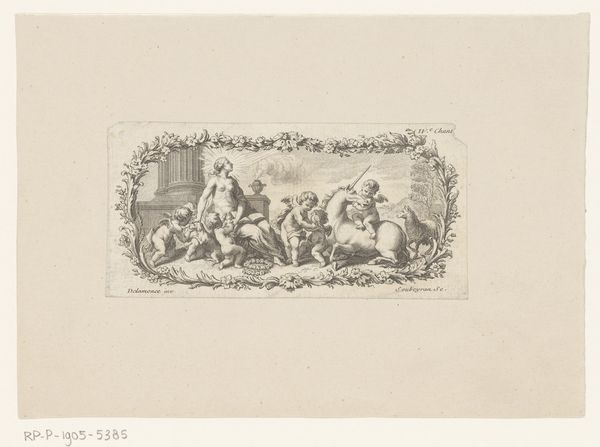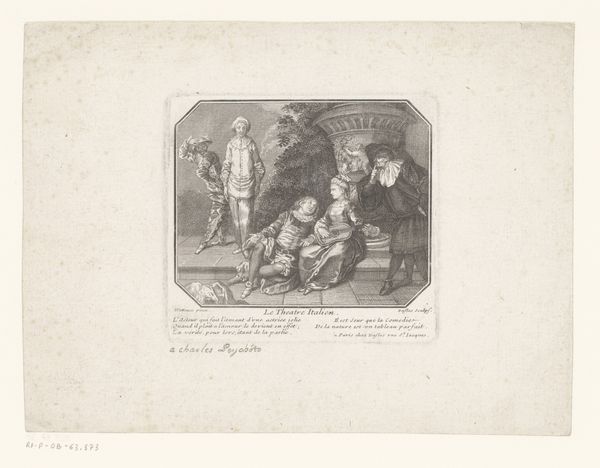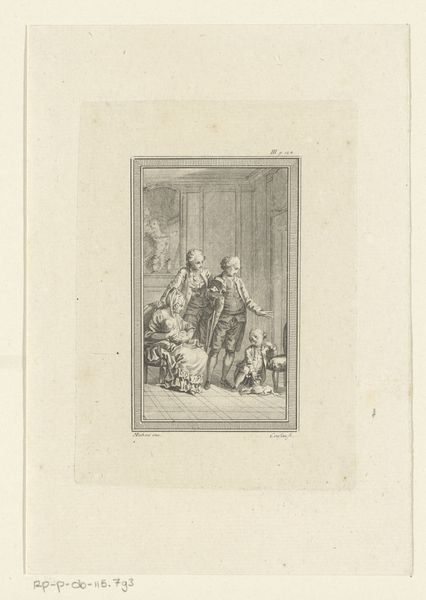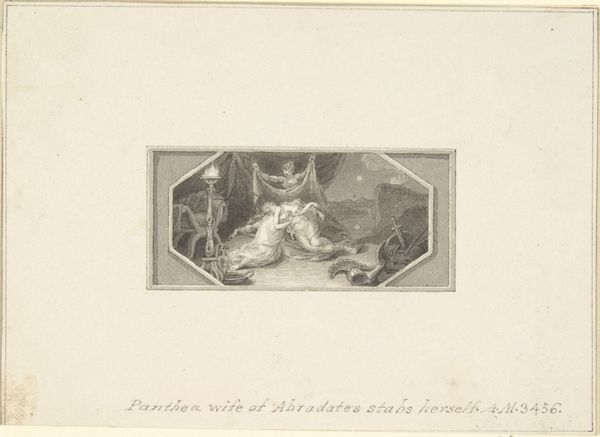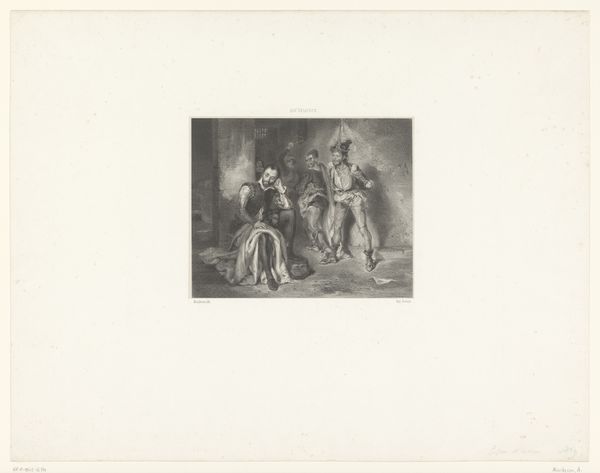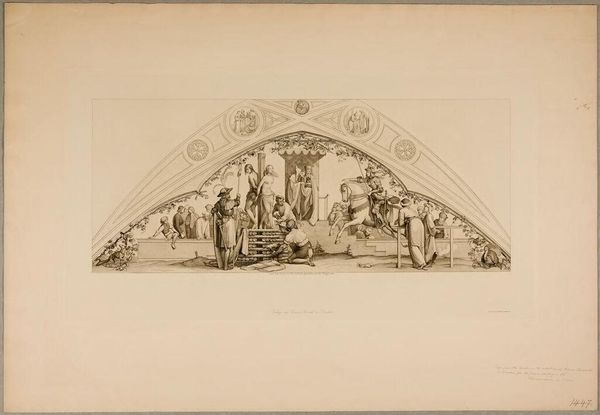
Berenice prevents Ptolemy judging Condemned Persons while playing at Dice 1790 - 1800
0:00
0:00
drawing, print, engraving
#
drawing
# print
#
genre-painting
#
history-painting
#
academic-art
#
engraving
Dimensions: Sheet: 3 3/16 × 4 5/8 in. (8.1 × 11.7 cm)
Copyright: Public Domain
Editor: This engraving by Edward Francis Burney, created sometime between 1790 and 1800, depicts "Berenice prevents Ptolemy judging condemned persons while playing at dice". The scene seems remarkably calm, considering the stakes, with the figures rendered in such fine detail. What strikes you when you look at it? Curator: It's fascinating how Burney uses this domestic scene, dice game and all, to comment on the public role of justice and power. Ptolemy, a ruler, is shown potentially neglecting his duties. Notice the stage-like setting; this heightens the sense of performance and the theatrical nature of governance. The image raises questions about the ethics of leadership and the influence of personal relationships on judicial processes. Do you think the artist is valorizing or critiquing Berenice's intervention? Editor: That's interesting. I hadn't considered the "stage." It definitely does seem to hint at theatrics. I suppose it's a bit of both—her intervention, if just, highlights Ptolemy's potential failings, but also suggests the limitations of his authority, right? Curator: Exactly. Consider the period: late 18th-century England was grappling with its own political scandals and questioning of authority. This artwork participates in a wider conversation about the responsibilities of leadership, and the complex relationship between rulers and those they govern, mediated, of course, by the very public forum of art itself. Do you think images like this could influence public opinion at that time? Editor: Definitely. It makes me think about how art can hold up a mirror to society's power structures, or even become a lever to change them. Curator: Precisely! And remembering this function allows us to see how an seemingly 'historical' genre painting engages so very directly with the politics of imagery and of social reform.
Comments
No comments
Be the first to comment and join the conversation on the ultimate creative platform.
